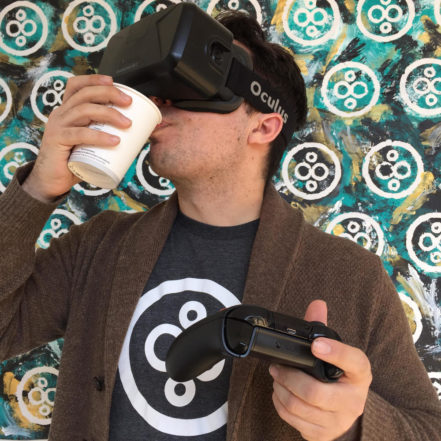Fab 50 VR options for the AEC space
by TODD STOLARSKI | June 1, 2015

Virtual Reality has come a long way from the novelty attraction once found in shopping malls two decades ago. Flash forward to today where forward-thinking firms in many industries are now racing to find market share in the VR space. Not surprisingly, vendors also have flooded the AEC industry with a growing smorgasbord of practical apps for these devices.
As a service, San Francisco-based engineering solutions provider VIATechnik has compiled a list of 50 VR hardware and software tools already changing the way architects, engineers, and contractors do business. “As large tech companies such as Facebook, Google, and Microsoft build their own game-changing tools or buy companies in this space, things will only become more ‘real’,” says VIATechnik CEO Danielle Dy Buncio, herself a LEED-certified civil engineer.
Below, from the VIATechnik 50, is a random sample of seven, as described by Dy Buncio’s firm:

- OCULUS RIFT Oculus Rift’s headset is traditionally seen as a tool for gamers. However, in the AEC space, it makes working in virtual environments so much easier. Through the 3D experience, combined with motion-tracking capabilities, it becomes much easier to move around 3D models and to look around corners than using a mouse and keyboard;
- LEAP MOTION The Leap Motion Controller is a motion-sensing device that allows users to see their hands in VR and augmented reality, as well as on a Mac or PC. The technology converts hand and finger movements into 3D input with sub-millimeter accuracy, virtually no latency, and without gloves or other handheld accessories. A developer’s kit is available to be used in the integration of this device into various applications, such as 3D Modeling, or ARVR;
- REVIT Autodesk’s BIM software allows teams to create the 3D environments necessary for VR applications. The software works well for converting 2D construction drawings into 3D models, 3D point cloud images into 3D models, and utilizing the models into other Autodesk products. While using Revit to generate models might be overkill, in AEC jobs, the models can then be used to generate CD drawings in addition to the VR environment;
- DAQRI Smart Helmet Daqri’s smart hard hat seems quite similar to what Google Glass and Microsoft Hololens is able to do, but for industrial applications. Using 360-degree navigation cameras, a high-resolution depth sensor, and an inertial measurement tool, the hard-hat creates an augmented reality experience to help people on the jobsite complete their jobs faster. It would be interesting to see how this develops with Hololens coming out in the near future.
- IrisVR IrisVR is still in early development, but seems similar to Unity. Based on what we’ve seen, it can offer users a ‘one-click’ option to transform models from Revit and Sketchup into a VR model. Perhaps professionals seeking a quick VR model can go this route over Unity;
- MYO Myo is a wearable armband device that allows the user to use gestures to wirelessly control technology. This device could be used on construction sites, in laboratories, or even at the office to control equipment, robotics, presentations, and more;
- TOUCHABLE HOLOGRAMS Thanks to clever engineering by the research team at Bristol University, virtual reality should expand beyond sight and sound to also ‘touch’. Imagine being able to feel different interior textures and choosing the right ‘texture’ for your project? With this technology, one won’t need heavy binders of showroom material – a simple holographic projection should do the trick!
For the rest of the Fab 50, click on over to VIATechnik.





Discussion
Be the first to leave a comment.
You must be a member of the BuiltWorlds community to join the discussion.